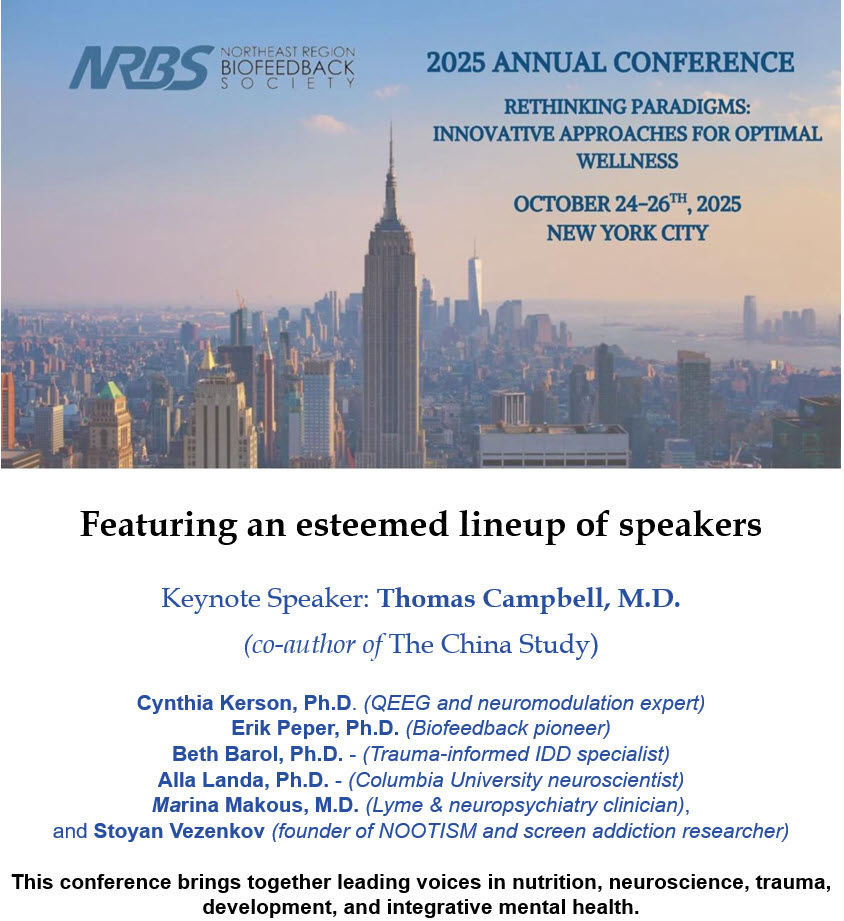5-Min Science: Four Distinct Types of Autism
- Fred Shaffer
- Jul 10
- 8 min read
Updated: Aug 1

Litman and colleagues' (2025) groundbreaking study published in Nature Genetics has fundamentally changed how we understand autism spectrum disorder, revealing that what we've long considered a single condition may actually be four distinct subtypes, each with its own genetic fingerprint and developmental trajectory.
The research, led by scientists at Princeton University and the Flatiron Institute, represents the largest person-centered analysis of autism ever conducted and offers unprecedented insights into the biological mechanisms underlying this complex condition.
What Is the Science?
For decades, autism has been understood as a "spectrum" disorder precisely because of its bewildering diversity. Some individuals with autism are nonverbal and require significant daily support, while others excel academically and professionally but struggle with social interactions. Some develop anxiety and depression, while others exhibit repetitive behaviors or intellectual disabilities. This heterogeneity has long puzzled researchers and made it challenging to develop targeted treatments or understand the condition's genetic basis.
The new study takes a radically different approach to this complexity. Instead of looking at individual traits in isolation, a method that has dominated autism research, the scientists used what's called a "person-centered" approach. This means they looked at each individual holistically, considering all their traits together as a complete picture rather than fragmenting them into separate categories.
What Did They Study?
The research team analyzed data from 5,392 children with autism and 1,972 of their non-autistic siblings, all participants in the SPARK study, a nationwide effort to collect genetic and clinical information about autism.
The children ranged from 4 to 18 years old, and the researchers gathered comprehensive information about their social communication abilities, repetitive behaviors, developmental milestones, co-occurring conditions like ADHD and anxiety, and crucially, their genetic profiles from whole-exome sequencing.
This wasn't just a paper-and-pencil exercise. The team collected 239 different phenotypic features, essentially detailed measurements of traits and behaviors, from standardized questionnaires that parents and clinicians completed. They also had access to complete genetic data, allowing them to examine both common genetic variants and rare mutations that might contribute to autism.
What Did They Do?
The scientists employed a sophisticated statistical technique called generative finite mixture modeling, which essentially acts like an extremely advanced pattern-recognition system. Rather than imposing preconceived categories on the data, this approach allows natural groupings to emerge from the patterns in the data itself.
Think of it like having thousands of puzzle pieces scattered on a table. Instead of trying to force pieces together based on assumptions about what the final picture should look like, this method identifies which pieces naturally fit together based on their actual shapes and patterns. The computer algorithm examined all 239 traits across all 5,392 children simultaneously, looking for natural clusters of individuals who shared similar combinations of characteristics.
To ensure their findings were robust, the researchers tested their model thousands of times with different starting conditions and even with subsets of the data. They also validated their results in a completely independent group of 861 children from the Simons Simplex Collection, another major autism research cohort.
What Did They Find About the Autism Spectrum?
The analysis revealed four distinct groups, each representing about 10-37% of the autism population:
The Social/Behavioral group, comprising 37% of the sample, showed high levels of social communication difficulties and repetitive behaviors, along with significant attention deficits, disruptive behavior, and anxiety. However, these children typically didn't have developmental delays and reached milestones like walking and talking at relatively typical ages.
The Mixed ASD with Developmental Delay group, representing 19% of participants, displayed a more complex profile. While they had some autism-related challenges, their defining characteristic was significant developmental delays. These children typically took longer to reach major milestones and often had intellectual disabilities.
The Moderate Challenges group, the largest at 34%, consistently scored lower than other autistic children across all measured areas, though they still showed clear differences from non-autistic siblings. This group represents what might be considered "milder" presentations of autism.
Finally, Broadly Affected group, though the smallest at 10%, showed the most severe challenges across virtually all domains measured. These children had high rates of intellectual disability, developmental delays, anxiety, and other co-occurring conditions.
What Is the Impact?
Perhaps most remarkably, each of these four groups showed distinct genetic signatures. When the researchers examined the participants' DNA, they found that different types of genetic variation were associated with different autism subtypes.
The Social/Behavioral group showed the strongest signals for common genetic variants associated with ADHD and depression; conditions that frequently co-occur with their behavioral profile. These individuals also had mutations in genes that are primarily active after birth, particularly in brain regions involved in inhibitory control.
In stark contrast, the Mixed ASD with Developmental Delay group was characterized by both new mutations and inherited variants, particularly affecting genes that are crucial during fetal brain development. This suggests that their autism stems from disruptions very early in development.
The Broadly Affected group had the highest burden of new mutations—genetic changes that weren't inherited from parents but occurred spontaneously. Many of these mutations affected genes that are highly intolerant of disruption, suggesting that major genetic hits early in development contribute to their severe presentations.
Most intriguingly, the timing of when genes are active during brain development aligned perfectly with when symptoms emerged clinically.
Children in the Mixed ASD with Developmental Delay group, whose mutations affected genes active during fetal development, were diagnosed earliest and had the most significant early developmental delays. Meanwhile, the Social/Behavioral group, whose mutations affected genes more active after birth, were diagnosed later and had fewer early developmental concerns.
What Were the Limitations?
Despite its groundbreaking findings, the study has several important limitations that the researchers themselves acknowledge. First and foremost, the research relied heavily on parent-reported questionnaires rather than direct clinical assessments by trained professionals. While these standardized questionnaires are widely used and validated, they can be subject to reporting biases and may not capture the full complexity of each child's presentation.
The study also focused exclusively on children aged 4-18, meaning the findings may not apply to adults with autism or very young children. Autism presentations can change significantly over time, and it's unclear whether these four subtypes remain stable as individuals age or whether new subtypes might emerge in adulthood.
Another significant limitation is that the study was conducted primarily on families of European ancestry, which limits how generalizable the genetic findings are to other populations. Autism affects people of all racial and ethnic backgrounds, but genetic research has historically been skewed toward European populations, potentially missing important genetic variants that contribute to autism in other groups.
The researchers also note that intellectual disability can complicate the assessment of social behaviors, making it challenging to distinguish between autism-related social difficulties and those that might stem from cognitive limitations. This is particularly relevant for interpreting findings in the groups with developmental delays.
Finally, while the study identified four distinct subtypes, the researchers acknowledge that autism's complexity likely extends beyond these four groups.
Future studies with even larger sample sizes and more comprehensive phenotyping might reveal additional subtypes or further subdivisions within the identified groups.
Conclusion
This research has profound implications for how we understand, diagnose, and potentially treat autism. For families, it provides a framework for understanding why their child's autism might look so different from another child's autism—they may literally have different subtypes of the condition.
For clinicians, these findings suggest that treatment approaches might need to be tailored to specific subtypes. A child in the Social/Behavioral group might benefit from interventions targeting anxiety and attention issues, while a child in the Mixed ASD with Developmental Delay group might need more intensive developmental support.
For researchers, this work opens entirely new avenues for investigation. Instead of studying "autism" as a monolithic condition, scientists can now focus on understanding the specific biological mechanisms underlying each subtype.
This could accelerate the development of targeted therapies and help explain why previous studies sometimes yielded conflicting results; they may have been inadvertently mixing together different subtypes.
The study also has implications for genetic counseling. Understanding which type of genetic variation contributes to different autism subtypes could help families better understand recurrence risks and potential outcomes.
Five Key Takeaways
1. Autism isn't one condition but four distinct subtypes: Each has its own pattern of symptoms, developmental trajectory, and genetic basis, explaining why autism presentations vary so dramatically between individuals.
2. Genes matter, but in different ways for different subtypes: Some autism subtypes are driven by new mutations affecting highly important genes, while others involve inherited variants or common genetic risk factors for conditions like ADHD.
3. Timing of gene activity predicts clinical outcomes: Children whose autism involves genes active during fetal development tend to be diagnosed earlier and have more severe developmental delays, while those with genes active after birth may have later-emerging social and behavioral challenges.
4. A person-centered approach reveals hidden patterns: By looking at individuals holistically rather than focusing on isolated traits, researchers uncovered biologically meaningful subtypes that had been invisible to previous approaches.
5. More diverse research is needed: While these findings are groundbreaking, future studies must include more diverse populations and longer-term follow-up to fully understand autism's complexity across all communities and developmental stages.

Glossary
ADHD: Attention-deficit hyperactivity disorder, a neurodevelopmental condition characterized by inattention, hyperactivity, and impulsivity that frequently co-occurs with autism.
autism spectrum disorder: a neurodevelopmental condition characterized by persistent deficits in social communication and interaction, alongside restricted and repetitive patterns of behavior, interests, or activities.
co-occurring conditions: additional medical, psychiatric, or developmental conditions that appear alongside a primary diagnosis, such as anxiety, depression, or intellectual disability in individuals with autism.
common genetic variants: DNA variations that are relatively frequent in the general population and typically have small individual effects on traits or disease risk.
developmental delays: significant delays in reaching typical developmental milestones such as walking, talking, or other age-appropriate skills.
developmental milestones: key skills or behaviors that most children achieve by certain ages, such as first words, walking, or social interactions.
fetal brain development: the process of brain formation and growth that occurs during pregnancy, before birth.
generative finite mixture modeling: a sophisticated statistical technique that identifies natural groupings or clusters in complex datasets without imposing preconceived categories.
genetic signatures: distinctive patterns of genetic variation that characterize specific groups or conditions.
intellectual disability: a condition characterized by significant limitations in both intellectual functioning and adaptive behavior.
new mutations: genetic changes that occur spontaneously in an individual and were not inherited from either parent, also called de novo mutations.
person-centered approach: a research methodology that examines individuals holistically, considering all their traits together rather than studying isolated characteristics.
phenotypic features: observable characteristics or traits of an individual, including physical, behavioral, and developmental attributes.
rare mutations: genetic changes that occur infrequently in the population and often have larger effects on traits or disease risk than common variants.
repetitive behaviors: restricted, repetitive patterns of behavior, interests, or activities that are characteristic of autism spectrum disorder.
Simons Simplex Collection: a research database containing genetic and clinical information from families affected by autism, used to validate scientific findings.
social communication: the use of verbal and nonverbal communication in social contexts, including skills like eye contact, facial expressions, and understanding social cues.
SPARK study: a large-scale research initiative that collects genetic and clinical data from families affected by autism to advance understanding of the condition.
subtypes: distinct categories or classifications within a broader condition, each with unique characteristics and potentially different underlying causes.
whole-exome sequencing: a genetic testing method that sequences all the protein-coding regions of an individual's DNA to identify genetic variations.
Reference
Litman, A., Sauerwald, N., Green Snyder, L., Foss-Feig, J., Park, C. Y., Hao, Y., Dinstein, I., Theesfeld, C. L., & Troyanskaya, O. G. (2025). Decomposition of phenotypic heterogeneity in autism reveals underlying genetic programs. Nature Genetics. https://doi.org/10.1038/s41588-025-02224-z
About the Author

Fred Shaffer earned his PhD in Psychology from Oklahoma State University. He earned BCIA certifications in Biofeedback and HRV Biofeedback. Fred is an Allen Fellow and Professor of Psychology at Truman State University, where has has taught for 50 years. He is a Biological Psychologist who consults and lectures in heart rate variability biofeedback, Physiological Psychology, and Psychopharmacology. Fred helped to edit Evidence-Based Practice in Biofeedback and Neurofeedback (3rd and 4th eds.) and helped to maintain BCIA's certification programs.
Support Our Friends









Comentarios